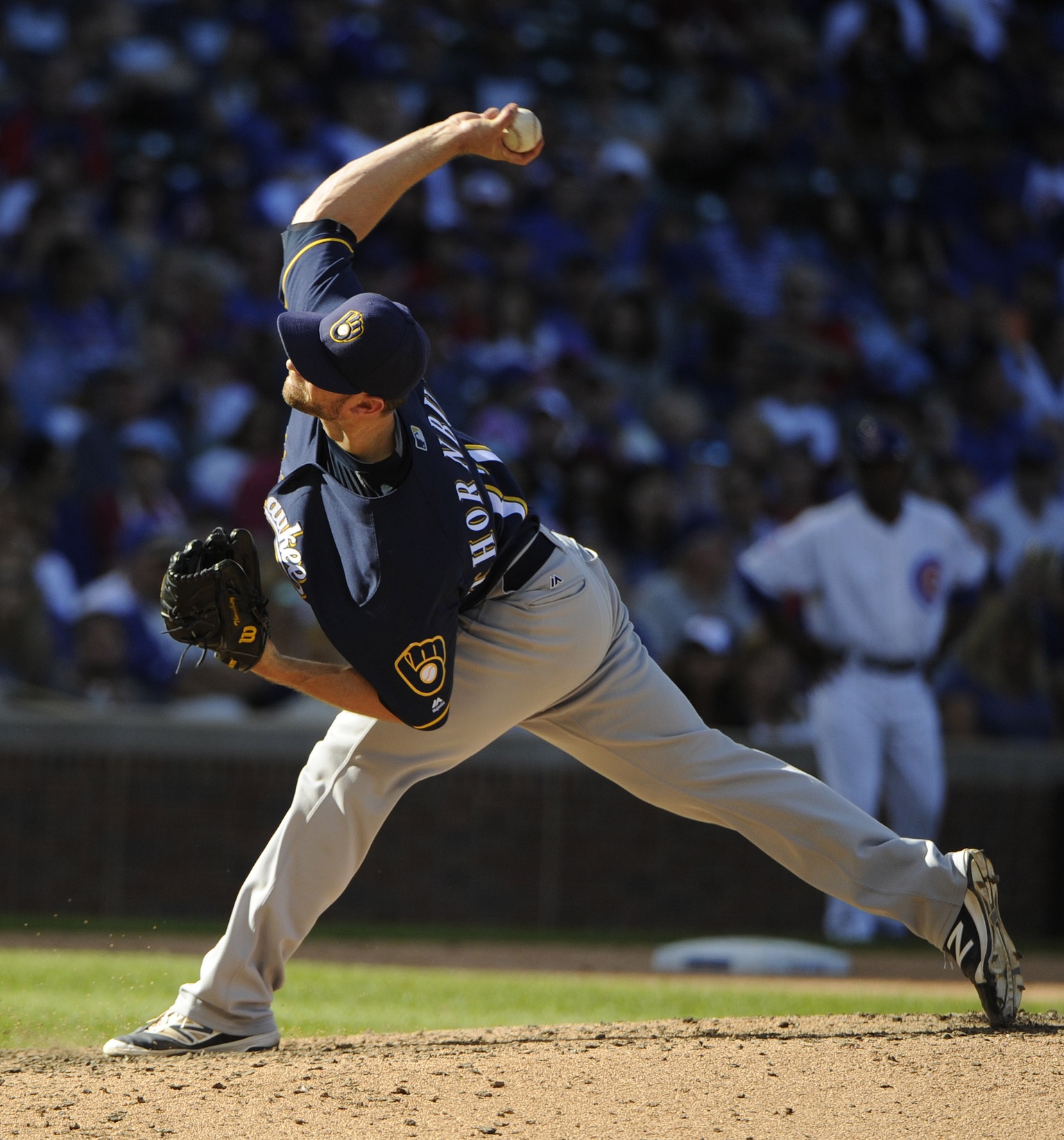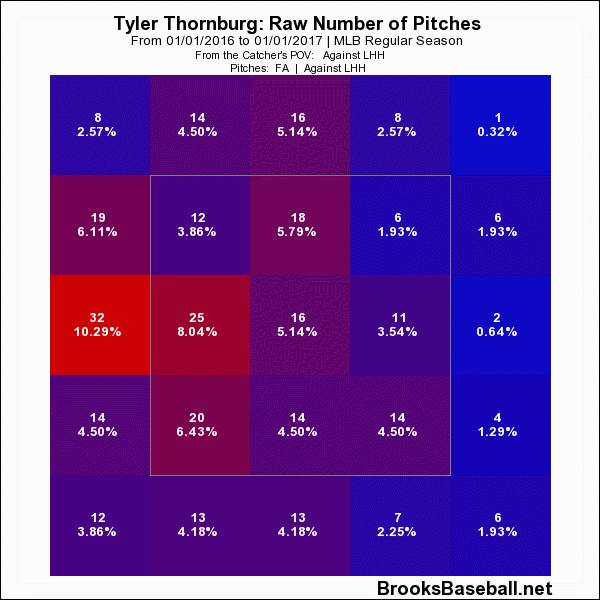The Brewers have quite a bit of familiarity with platoon splits, especially when it comes to relievers. During his two-ish years in Milwaukee, Jeremy Jeffress fared far better against right-handed batters (.242 wOBA against) than he did against lefties (.351 wOBA). A host of other faceless bullpen arms — Burke Badenhop, Neal Cotts, and Jonathan Broxton, to name a few — have similarly struggled when facing opposite-handed hitters.
Tyler Thornburg is no faceless bullpen arm. He’s struggled with injuries in the past, but this season, when he finally got healthy, he broke out. With an 80 DRA- and 79 cFIP, Thornburg established himself as one of the best relievers in the majors — in other words, he stood apart from the Badenhops, Cottses, and Broxtons of the world.
In one regard, though, he bore a striking resemblance to the aforementioned names. Thornburg had a pretty major platoon split this season — albeit in the opposite direction:
| Handedness | TBF | K% | BB% | BABIP | HR% | GB% | AVG | OBP | SLG | wOBA |
|---|---|---|---|---|---|---|---|---|---|---|
| L | 112 | 40.2% | 9.8% | .222 | 0.9% | 38.2% | .130 | .223 | .190 | .192 |
| R | 151 | 29.8% | 9.3% | .233 | 3.3% | 28.9% | .184 | .265 | .370 | .276 |
Mostly because of a spike in strikeouts and a glut of grounders, Thornburg crushed lefties this year, sticking with the trend he’d established in prior years. From 2012 to 2015, Thornburg compiled 152.2 innings of work for the Brewers; across that time, lefties posted a .264 wOBA off him, whereas righties knocked him around for a .338 wOBA. In 2016, Thornburg certainly didn’t struggle against righties, but he didn’t blow them away to the extent that he did lefties. Why?
Thornburg’s changeup accounts for a good deal of the split. This season, the pitch had a 21.9 percent swinging-strike rate, far higher than the clip on his fastball (11.9 percent) or his curveball (12.6 percent). Its 44.4 percent ground ball rate, meanwhile, easily topped his fastball (31.1 percent) and didn’t trail his curveball by much (47.6 percent). And as is the case for most changeups, it saw action primarily against opposite-handed hitters:
| Handedness | FF% | CH% | CU% |
|---|---|---|---|
| L | 64.1% | 16.1% | 19.8% |
| R | 67.8% | 4.1% | 28.0% |
Everyone Thornburg faced saw the fastball about two-thirds of the time. That last third made a lot of the difference —since the cambio reigned supreme above the bender, the hitters who saw the former more often had far less success. Improving on his curveball, which will probably remain Thornburg’s out pitch to righties, would go a long way toward eliminating this split.
The changeup doesn’t explain all this, however. Thornburg’s primary offering — that heater — dominated lefties, with a 14.5 percent whiff rate and 38.2 percent ground ball rate. Versus righties, its whiff rate declined to 10.2 percent, while its ground ball rate dipped to 27.8 percent. That’s likely due to the pitch’s shifting location:
Thornburg’s fastball is rather distinct. My BP Milwaukee colleague Kyle Lesniewski observed back in April that Thornburg has changed his location of the pitch; although it still has a ton of rise, he now places it lower within the zone, and its arm-side break means it runs in on right-handed hitters. This plot bears that out: Righties saw a lot more inside fastballs this year than lefties did. Against the latter, Thornburg threw 20.9 percent of his fastballs in the closest two-fifths of the strike zone; against the former, he did so 41.8 percent of the time — exactly twice as often. Given a more hittable heater, opposing batters unsurprisingly hit it quite well (or comparatively well, at least).
The break on Thornburg’s fastball should, in theory, make it an equalizer. Max Marchi’s platoon split research showed that “jumping” and “rising” fastballs — the ones without much horizontal movement, but with a ton of vertical movement — play much more neutral than straight heaters. With this location pattern, though, the fastball will have its potential capped, and so will its owner.
The 2016 version of Thornburg was still an elite reliever, which means he probably has the inside track on the closer position for 2017. In that role, he’ll probably continue to excel against lefties, but without a better curveball and a different fastball strategy, he won’t carry that excellence over to righties. Like Jeffress and many other erstwhile Brewers, Thornburg needs to retire everyone indiscriminately if he wants to be as great as he can be.

